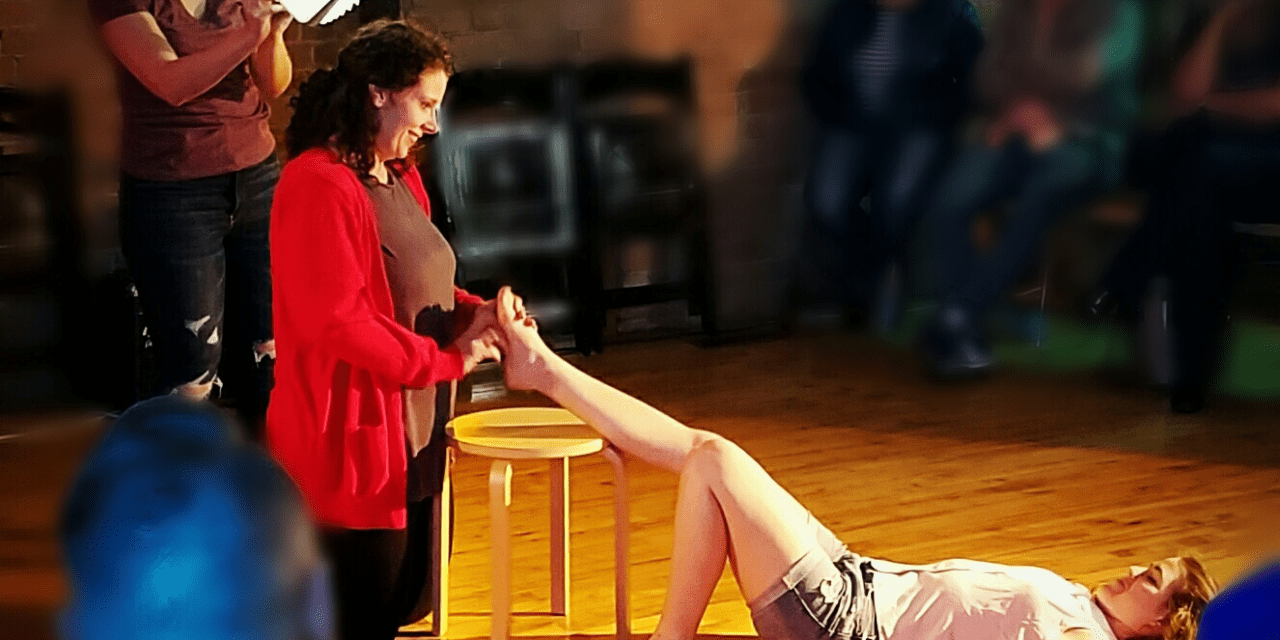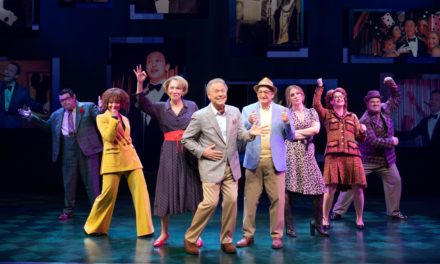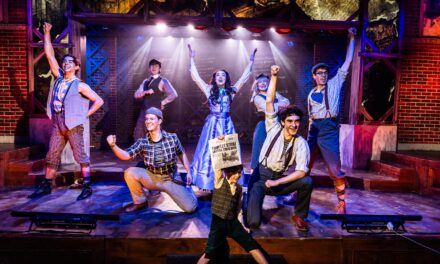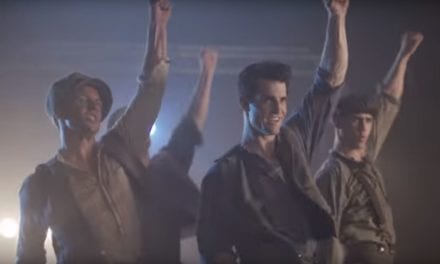
Show closes October 30, 2016.
SALT LAKE CITY — The natural wood and exposed brick of Avenues Yoga on K Street in Salt Lake City provide the ideal setting for Sackerson’s production of Burn, the incisive new play by Morag Shepherd, artfully directed by Dave Mortensen. Beneath designer Alex Ungerman’s array of four large, filtered fixtures that resemble sun lamps, the action unfolds at the center of a complex of improvised benches. Made from the frames of stacking chairs and a few boards, these benches—as if they have sprung up organically out of the hardwood planks beneath the audience’s feet—suggest a tangible connection between watching the play and the performance space’s day-to-day function: a place where purging emotional angst or spiritual tension is worked out, on the floor, through movement, balance, and meditation. Though only the actors engage in any actual movement in Burn, the play’s dreamlike exploration of anxiety and catharsis remains a shared, participatory event that I urge you to go experience for yourself.
Of the studio’s three original structural pillars, the central one has been removed to open up more floorspace for the practice of yoga. Similarly, the play’s narrative structure suppresses the typically central chronological element, allowing the emotional core of the piece to command your full attention. This means that Burn does not lend itself well to traditional plot summaries. Everything revolves around Allison (played by Elizabeth Golden) and her interactions with her family, including her husband Clark (Aaron Kramer), her sister Ana (Olivia Custodio), her daughters Claire (Merry Magee) and Riley (McKenzie Steele Foster), and Paul (Shawn Francis Saunders), an ex-boyfriend who is also Claire’s father. Allison’s skin condition (that makes her susceptible to sunburn), her sense of self, loss of religious faith, family relationships, and mental health are all themes that emerge in and out of focus from the fog that drifts intermittently through the room on the current of Ungerman’s undulating synthesizer pads that serve as a sonic backdrop.
Shepherd deliberately blurs distinctions between time, memory, and reality. Subtle tells and contradictions throughout evoke the fragmented lens of Allison’s mind. In one more obvious example, we see sisters Allison and Ana playing together as young girls. At the same time, Claire and Riley play a parallel game with each other. Eventually, the games appear to merge, collapsing time, space, and generational distinctions. Scenes between the men in Allison’s life likewise bleed into each other. For example, in one moment Allison might be speaking with one, while the other plays a tree, and in the next moment the men’s roles have reversed.

From left to right, Merry Magee, Elizabeth Golden, and McKenzie Steele Foster in Sackerson’s production of Burn.
One of the recurring props mirrors this effect physically—a book that, as it is opened, reveals a paper accordion structure with a light inside. When the book’s covers are opened all the way until their surfaces touch, an illuminated cylinder of light is formed. Just as it expands and contracts the light within, time, memory, and reality expand, contract, and shine out from Allison’s life in a kaleidoscopic dreamscape. Along with the other physical light motifs that the actors manipulate, it is as if the lights project flashes back, forward, or even outside of time.
Like Mortensen’s tangible use of light, his vision imbues sound with a similar materiality. For example, as Allison pantomimes using a sink, another actor produces the sound effects with a tub of water, in full view of the audience, drawing attention to the artifice. In another scene, two characters slap each other from across the room, and once again the other actors serve as foley artists, translating visual impressions into sounds that are meaningful to the audience. This not only enhances the sounds’ tactile quality, but the physical distance between actions and acoustics also contributes to the effect of temporal or even dimensional slippage between scenes.
Mortensen has coaxed exceptionally nuanced performances from his actors. The narrative’s fractured aesthetic seeps into the dialogue from time to time—events can turn on a dime and often without warning. However, the dialogue’s mostly unaffected nature and the actors’ steadiness carry it off. Golden inhabits Allison with a devastating honesty that both Custodio and Kramer reciprocate in interactions that are thrilling in their authenticity and even, sometimes, their cruelty. Magee and Foster brilliantly realize Shepherd’s cuttingly accurate characterization of children and their relationships with siblings and parents. Throughout, Golden contains Allison’s slow psychological burn to maintain a palpable tension, heightening its intensity through depth rather than breadth, making the emotional climax both earned and believable.

From left to right, Merry Magee and Shawn Saunders in Sackerson’s production of Burn.
Saunders, as Paul, looms over everything whether he is in a scene or not. He exudes an unpredictability, an electrifying proximity to the edge of danger that makes it easy to believe Allison’s inability to cut him loose. Though concrete details are elusive, Paul seems to belong to a different realm than the other characters. For one, he is the only member of the cast who doesn’t spend the play barefoot—as though he walks in a different sort of plane—and he takes a more prominent role in manipulating the lighting. Moreover, all of Paul’s interactions are with Allison, as if she is his only link to everyone else. Yet it doesn’t matter where or when he is. Regardless, his presence persists in her mind, unabated, “like a drug,” as she puts it.
You may be tempted to smooth out the action unfolding before you, to connect the dots and construct a coherent, traditional narrative. However, getting distracted by what occurred when, or if it occurred at all, is missing the point entirely. Burn’s structural arc is neither lucid nor chronological; rather, it is emotional. The sooner you stop trying to make sense of the fragments of kindling and instead focus on the flames that emanate from them, the sooner Burn will envelop you. As the program notes point out, Sackerson specializes in “new works, unconventional spaces, and bold audiences.” They have supplied you with the first two. You owe it to yourself to be part of the third and step into the dreamworld of Burn.
This play includes content for mature audiences, including language and sexual references.
Full disclosure: The director of this production (Dave Mortensen) is the founder of Utah Theatre Bloggers Association. The playwright (Morag Shepherd) is also a staff member and contributor. Neither had any involvement with the writing or editing of this piece. Honest criticism was encouraged.

From left to right, the cast of Sackerson’s production of Burn: Olivia Custodio, Merry Magee, Elizabeth Golden, McKenzie Steele Foster, Aaron Kramer, and Shawn Saunders.





